Welcome to Glassics
A Treasure in Glass
Our Techniques
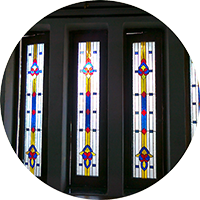
Stained glass
Stained glass, such as the windows that are seen in churches, are windows that contain Naturally coloured glass in –them. In a Stained glass panel, each part of the design, the glass has to be individually cut to the required shape . Following this process, the sections of glass are placed together and held in place with lead came that is then soldered at the joints.
Fusion/Slumped Glass glass
Kiln formed glass is usually referred to as warm glass, and can be either made up from a single piece of glass that is slumped into or over a mould or different colors and sheets of glass fused together. The process of hot glass is highly scientific & in this, the types of glass and temperatures that they must be fired at is quite a complicated operation. Art glass that is kiln formed usually take the form of dishes, plates or tiles. Glass that is fused in a kiln must be of the same co-efficient of expansion (CoE). If glass that does not have the same CoE is used for fusing, the differing rates of contraction will cause minute stress fractures to form and, over time, these fractures will cause a piece to crack. The use of polarizing filters to inspect the work will determine if stress fractures are present.
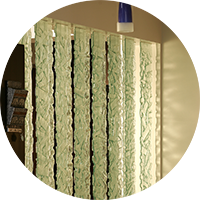
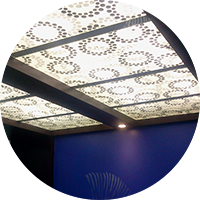
Sand blasting / Etching
Glass can be decorated by sandblasting the surface of a piece in order to remove a layer of glass, thereby making a design stand out. Compressed high pressure air along with fine sand is used for this process. It is commonly called as etching.
Texture glass / Acid texture / Acid etching
In this process, a combination of Non corrosive paint along with a glass corrosive acid is used to create different patterns on glass. The effects achieved are similar to the texture paint used on walls.

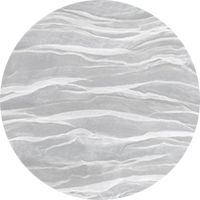
Laminated glass
Laminated glass is a type of safety glass that holds together when shattered. In the event of breaking, it is held in place by an interlayer, typically of polyvinyl butyral (PVB) or ethylene-vinyl acetate (EVA), between its two or more layers of glass. The interlayer keeps the layers of glass bonded even when broken, and its high strength prevents the glass from breaking up into large sharp pieces. In addition to this, special textured / designer fabrics can also used to add an element of design to these safety glasses.Laminated glass is normally used when there is a possibility of human impact or where the glass could fall if shattered and also for architectural applications. Skylight glazing and automobile windshields typically use laminated glass. In geographical areas requiring hurricane-resistant construction, laminated glass is often used in exterior storefronts, curtain walls and windows.
Lacquered glass
Coloured glass wall panelling can add warm or fresh tones to interior decor, with all-over brilliance of glass. Saint-Gobain’s colored and lacquered glass, SGG planilaque can be used for a range of applications like table tops, wardrobes, kitchens counters, home pillar cladding, paneling for walls, shower wall panels, etc. Lacquered glass can be used extensively for modern interior design in kitchens, living rooms, office spaces etc. View the picture gallery to see how glass can be used for your projects.
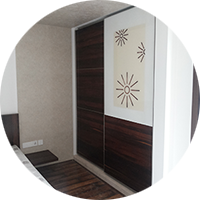
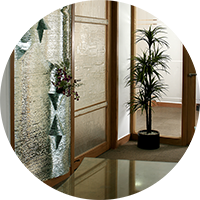
Butch Glass
Stacked glass or butch glass is a method of stacking strips of glass one on top of the other.

